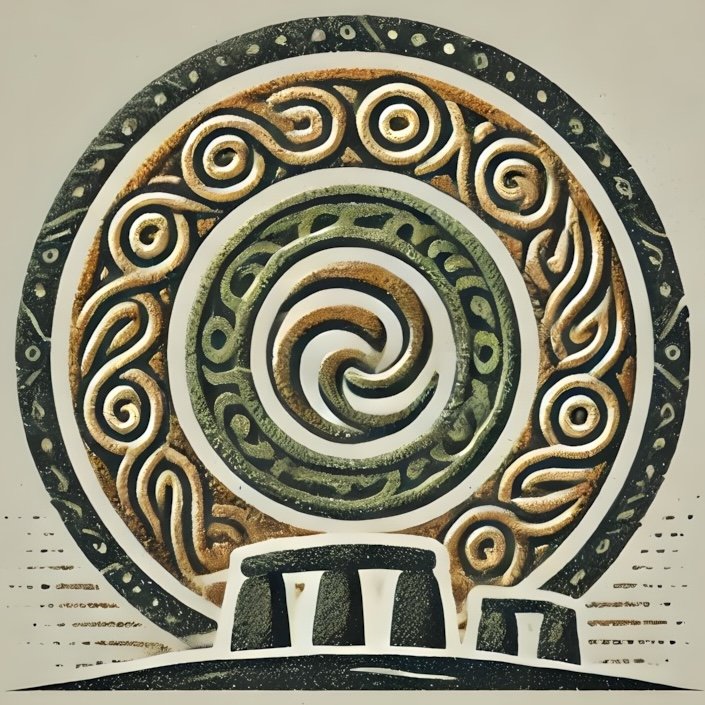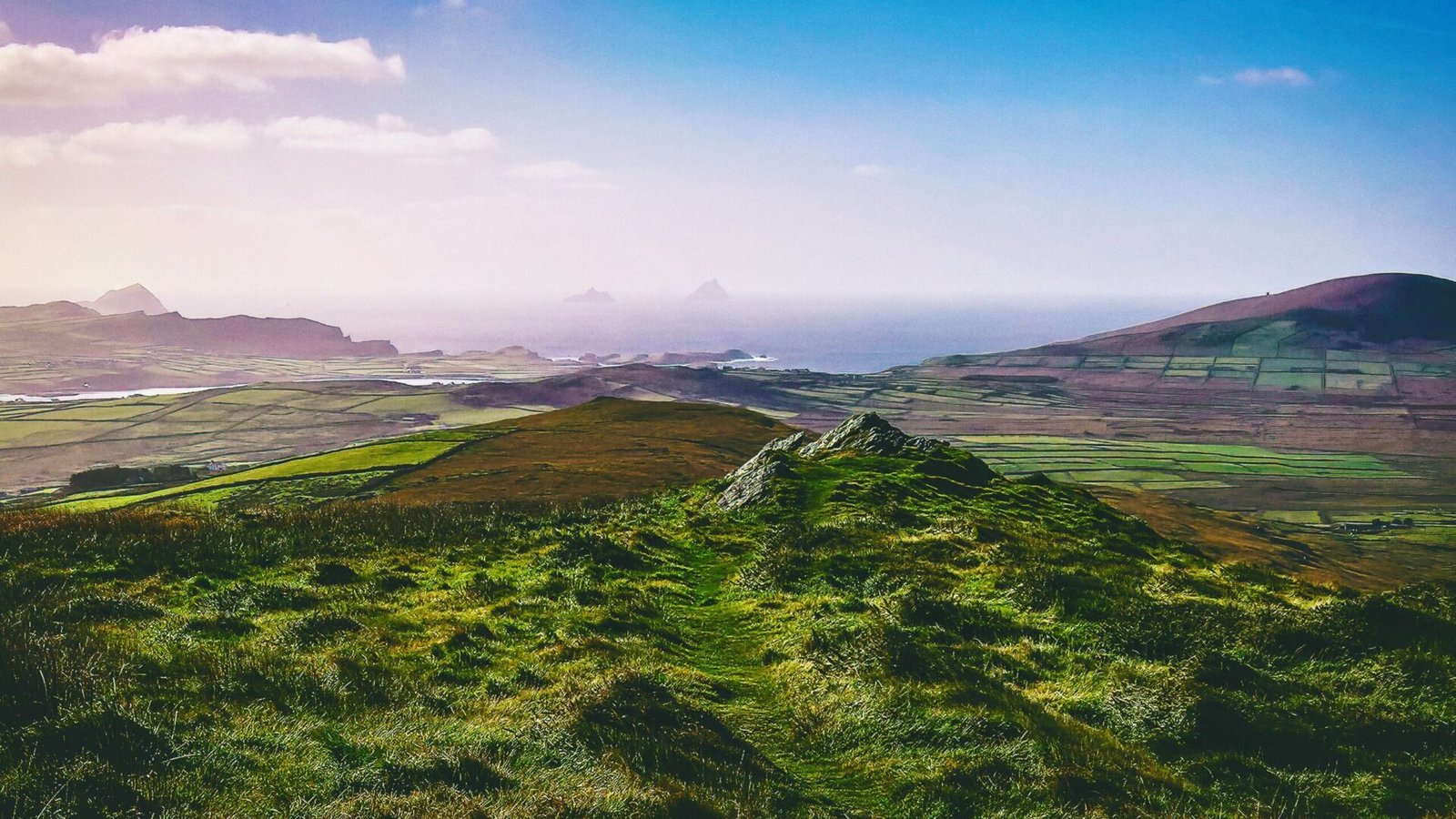# Rome, Saxons, and the Irish Frontier (~400–800 CE)
The period between 400 and 800 CE marks a transformative era in Irish history, characterized by a complex interplay of trade, raiding, and cultural exchange. While Ireland remained largely untouched by Roman conquest, the influence of the Roman world and interactions with Saxons significantly shaped the island’s socio-political landscape. This pillar page delves into the nuances of this era, exploring Ireland’s position within the Roman world, the debate surrounding Roman presence on the island, and the interactions with Saxons that heralded early medieval shifts.
## Ireland in the Roman World: Trade, Raiding, and Influence
During the height of the Roman Empire, Ireland occupied a unique position on the fringes of the Roman world. Although the Romans never fully conquered the island, their influence permeated through trade and cultural exchange. The Roman economy thrived on the exchange of goods, and Ireland, with its rich natural resources, became an important partner in this network.
Archaeological evidence suggests that the Irish were engaged in trade with the Romans, exchanging valuable commodities such as gold, silver, and livestock for Roman goods like pottery, wine, and luxury items. The discovery of Roman artifacts in Ireland, including coins and pottery, indicates that trade routes extended across the Irish Sea, linking the island with the broader economic currents of the Empire.
However, the relationship was not solely one of commerce. The Romans viewed Ireland as a land of potential conquest, and their military campaigns along the western fringes of their empire often included forays into Irish territory. While these incursions were primarily aimed at curtailing raiding from Irish tribes, they also served to establish a degree of Roman influence over the island. The presence of Roman military artifacts in Ireland suggests that the Romans may have engaged in limited military operations, albeit without establishing permanent settlements.
## Were There Romans in Ireland? The Debate Over Settlements
The question of whether the Romans established settlements in Ireland has long been a topic of scholarly debate. While some historians argue that the lack of substantial archaeological evidence for Roman towns or forts indicates that the Romans never settled in Ireland, others contend that the absence of such evidence does not rule out the possibility of temporary military camps or trading posts.
Roman writers, such as Ptolemy and Tacitus, mentioned the existence of tribes in Ireland, suggesting that the Romans had at least some knowledge of the island. However, the lack of detailed accounts leaves much to speculation. Some scholars propose that the Romans may have established temporary encampments during military expeditions or engaged in trade through coastal settlements, but the absence of substantial evidence for permanent habitation raises questions about the extent of Roman influence.
The debate continues, with some archaeologists pointing to the discovery of Roman-style artifacts and structures in Ireland as evidence of Roman presence. For example, the site of Dun Aonghasa on the Aran Islands features stone fortifications reminiscent of Roman military architecture. However, these findings are often interpreted as indigenous adaptations rather than direct evidence of Roman colonization.
Ultimately, the question of Roman settlements in Ireland remains unresolved, but what is clear is that the Roman world had a profound impact on the island’s cultural and economic development. The exchange of goods and ideas fostered connections that would shape Ireland’s trajectory in the centuries to come.
## Saxon Interactions and Early Medieval Shifts
As the Roman Empire began to decline in the late 4th century, the political landscape of Europe underwent significant changes. The rise of the Saxons marked a new chapter in the history of Ireland, as these Germanic tribes began to exert influence over the British Isles. While the Saxons primarily occupied what is now England, their interactions with Ireland would have far-reaching implications.
The arrival of Saxon raiders in the 5th and 6th centuries introduced new dynamics to the Irish landscape. While some Irish tribes engaged in trade with the Saxons, others faced violent incursions as the Saxons sought to expand their territories. The resulting conflicts and alliances contributed to a shifting power dynamic within Ireland, as local chieftains navigated the challenges posed by external threats.
One of the most significant outcomes of Saxon interactions was the emergence of early medieval kingdoms in Ireland. As the island’s tribes faced external pressures, they began to consolidate power, leading to the formation of regional kingdoms. This period saw the rise of influential figures such as Brian Boru and the establishment of dynasties that would shape Ireland’s political landscape for centuries.
Moreover, the cultural exchange between the Irish and Saxons played a crucial role in shaping early medieval Ireland. The introduction of new technologies, such as metalworking techniques and agricultural practices, contributed to advancements in Irish society. Additionally, the spread of Christianity, facilitated by Saxon missionaries, began to take root in Ireland during this period, further transforming the cultural landscape.
The interactions between the Irish and Saxons also fostered the development of a rich literary tradition. The blending of Irish and Saxon influences gave rise to a unique body of literature that would later inform the mythological and historical narratives of the island. Tales of heroism, adventure, and the supernatural began to intertwine, laying the groundwork for the rich tapestry of Irish mythology that endures to this day.
## Conclusion
The period between 400 and 800 CE was a time of significant transformation for Ireland, shaped by the influences of the Roman world and the interactions with Saxons. While the question of Roman settlements remains unresolved, the evidence of trade and cultural exchange underscores the interconnectedness of Ireland with the broader currents of European history. The arrival of the Saxons heralded new challenges and opportunities, leading to the emergence of early medieval kingdoms and a vibrant literary tradition.
As we explore the rich tapestry of Irish prehistory, it is essential to recognize the enduring impact of these interactions on the landscape of Ireland. From the remnants of Roman artifacts to the echoes of Saxon influence in Irish mythology, the legacy of this era continues to resonate, inviting us to uncover the stories that shaped the island’s past. For those seeking to explore these connections further, Ireland’s landscape is dotted with sites that offer a glimpse into this fascinating chapter of history, where the threads of trade, raiding, and cultural exchange intertwine to create a narrative that is uniquely Irish.
meta – Explore the interplay of Rome, Saxons, and the Irish Frontier (400-800 CE) in this guide, linking Irish prehistory, mythology, and key historical sites to visit.

